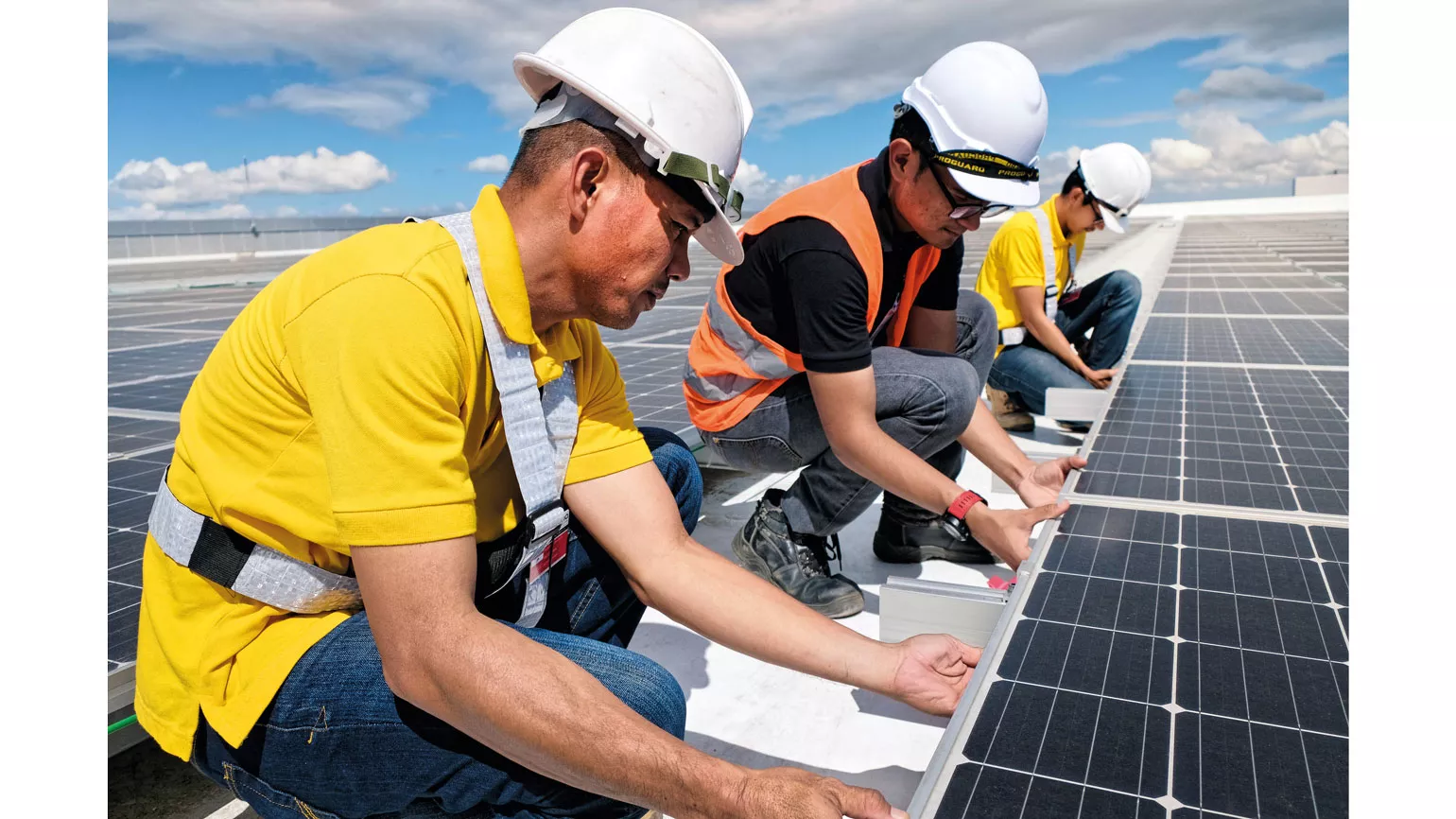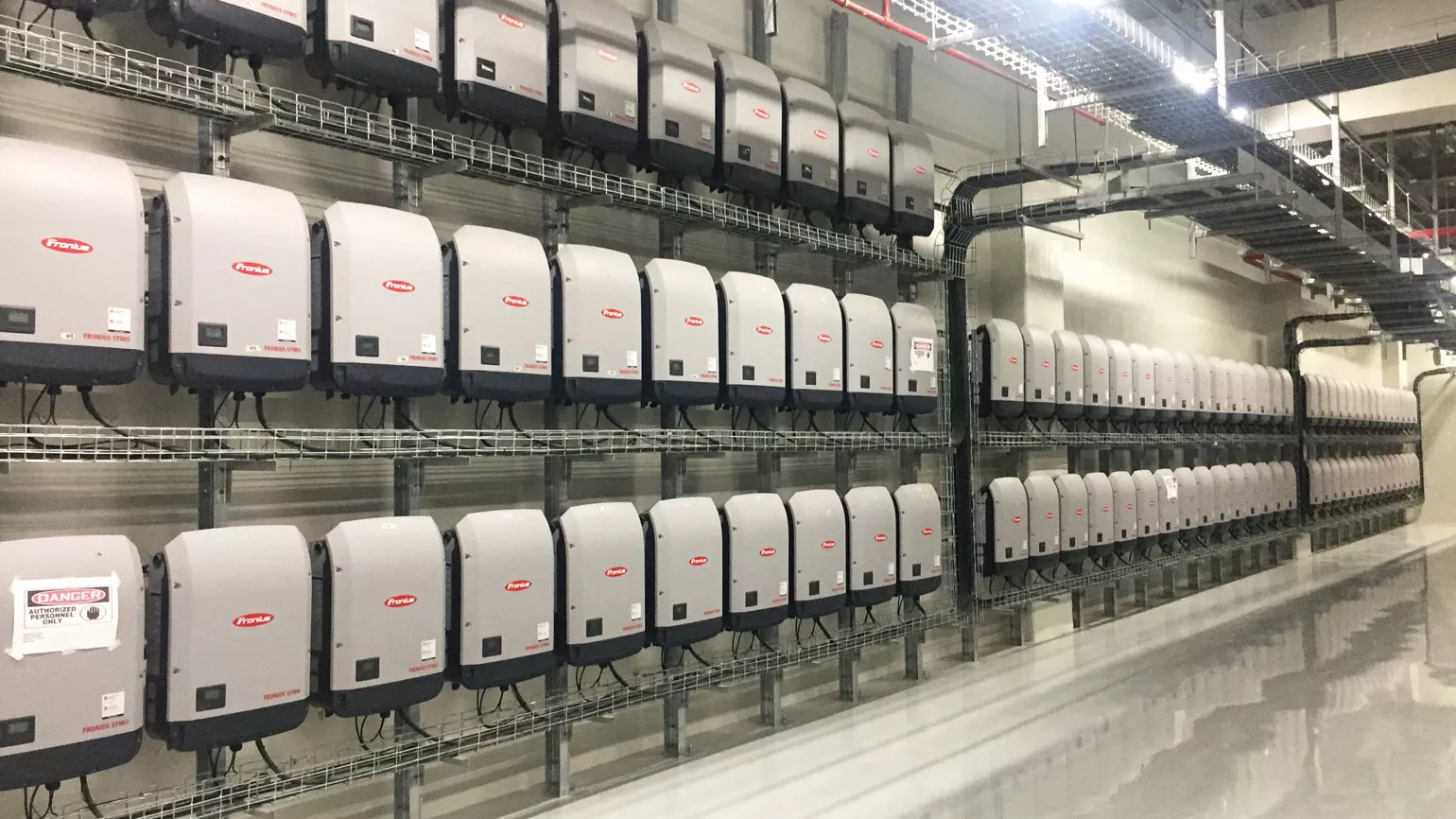Fronius: cost effectiveness is part of the solar energy strategy

For the use of photovoltaics (PV) to be
especially profitable in the commercial sector, planners need to think through
the system concept, from purchasing right through to long-term operation. With
its solutions, Fronius is also making a significant contribution to the vision
of 24 hours of sun within the commercial sector. For this, besides the reliable
and profitable generation of solar energy, a reduction in the balance-of-system
costs plays a particularly important role. These costs relate to all of the
components of a photovoltaic system, with the exception of the photovoltaic
modules, and make up a significant proportion of the total investment. Fronius
sees great potential savings in the AC/DC cabling and distributor boxes in
particular, depending on the system design and the inverters. In addition,
simpler and more rapid installation is another cost factor.
In terms of planning and estimating costs and yields, in addition to
the capital expenditure (CAPEX), the anticipated operating costs (OPEX) also
need to be taken into account. It is also important to precisely analyse the
expected yields. This makes the advantages of Fronius inverters with active
cooling technology clear: The system designs of the Fronius Eco and Fronius
Symo inverters can be flexibly adapted to the applicable circumstances, the
maintenance costs of the equipment are low, and should there be a problem, this
can be efficiently rectified using the most rapid service concept on the
market, PC board replacement. The standard connection to the internet via WLAN
or Ethernet makes system monitoring easier. Tom Peebles from Fronius Service
Partner Plus Solenergy Systems Inc. demonstrates these advantages in relation
to a reference project in the Philippines: “Fronius
SnapINverter offers a simpler design solution and ensures a high level of
system availability. The simple assembly speeds up installation, commissioning
and maintenance considerably.”
The best support thanks to know-how transfer
With 4771 kWp, this project involves the largest
self-consumption system in South-East Asia. The installation location also
shows how crucial having a low-maintenance, easy-to-assemble product in
combination with the right service concept really is. This is because, besides
the price-sensitive market, the local circumstances are a challenge for the
installer, Solenergy Systems. Fronius stands out on both fronts: The inverter
concept with active cooling optimises both the installation costs and the
maintenance costs. “In addition, Fronius
supports the continued training of installers. This ensures the quality of the systems and the availability of service
technicians, thereby offering the right service concept for a country made up
of over 7000 islands,” adds Hans Georg Einwagner, Area Sales
Manager for Fronius International GmbH.
The addition of remote monitoring
It’s not just rapid service and high quality that are decisive for
the reliability of the power supply; monitoring is also indispensable.
Operators can use the Fronius Solar.web online portal to monitor, analyse and
compare their photovoltaic systems wherever they are, and they can also use it
to carry out remote updates. In addition, Fronius offers a comprehensive range
of services, which begins with the extended warranty and goes right through to
support when commissioning a PV system and comprehensive service packages. The
aim is to immediately remedy any defects and therefore keep the downtime of the
photovoltaic system to a minimum. A key element here is the unique PC board
replacement process, which allows Fronius Service Partners to replace defective
parts as quickly as possible.
The result is a cost effective concept that holistically and
sustainably optimises the system costs of commercial systems and maximises
yields, whilst ensuring high availability through rapid and qualified service.
Fronius supports installers and their service partners with detailed
information and technical assistance. Not least, Fronius offers high security
of investment with its 26 years’ experience with roof systems. This factor
takes on even more significance when financing commercial photovoltaic
projects.




